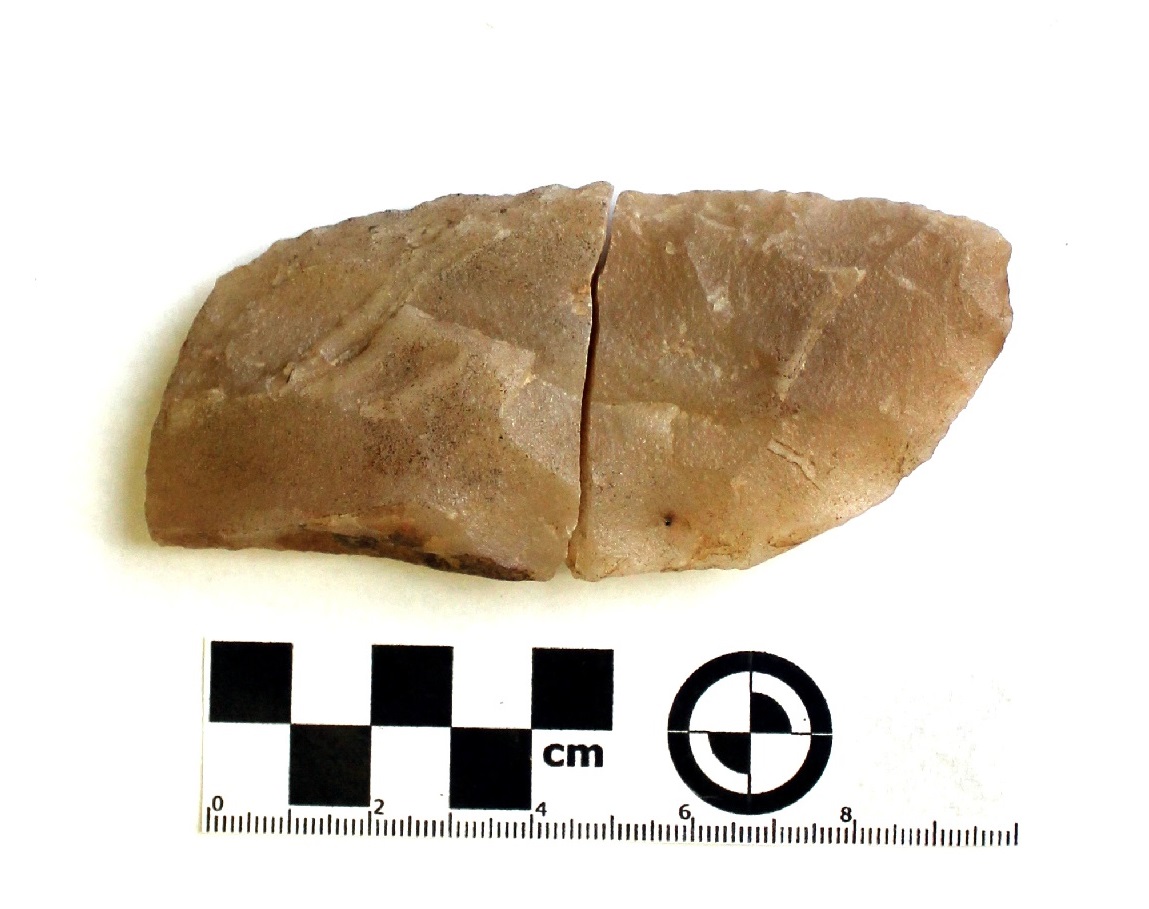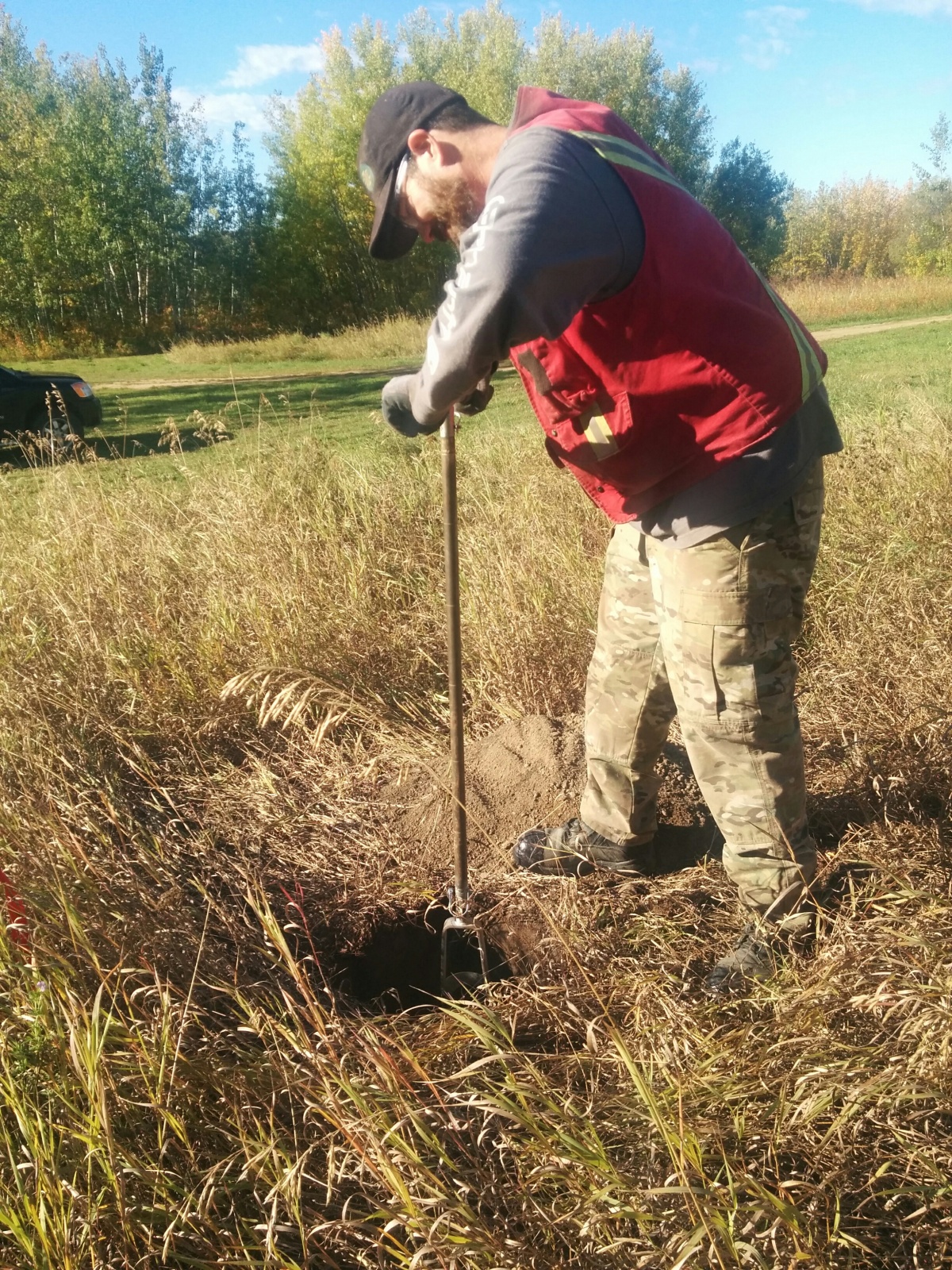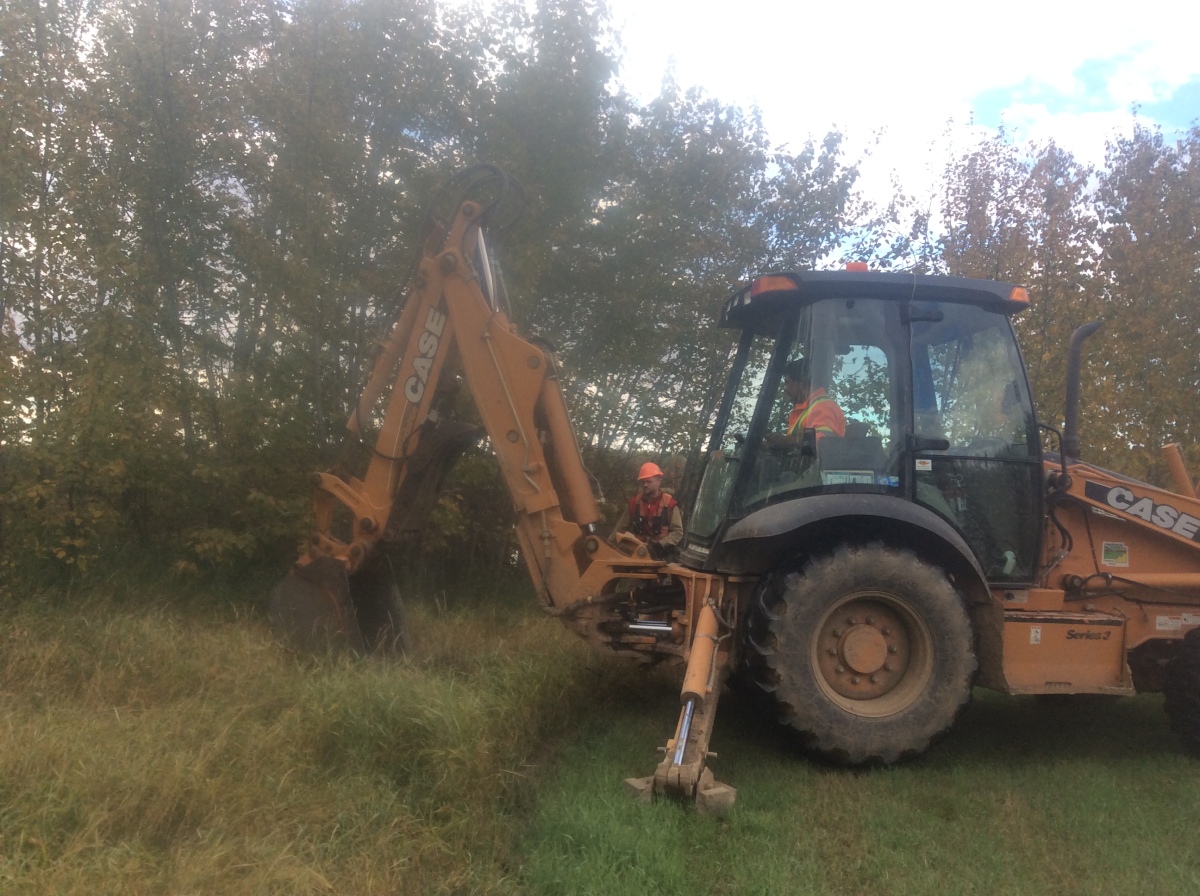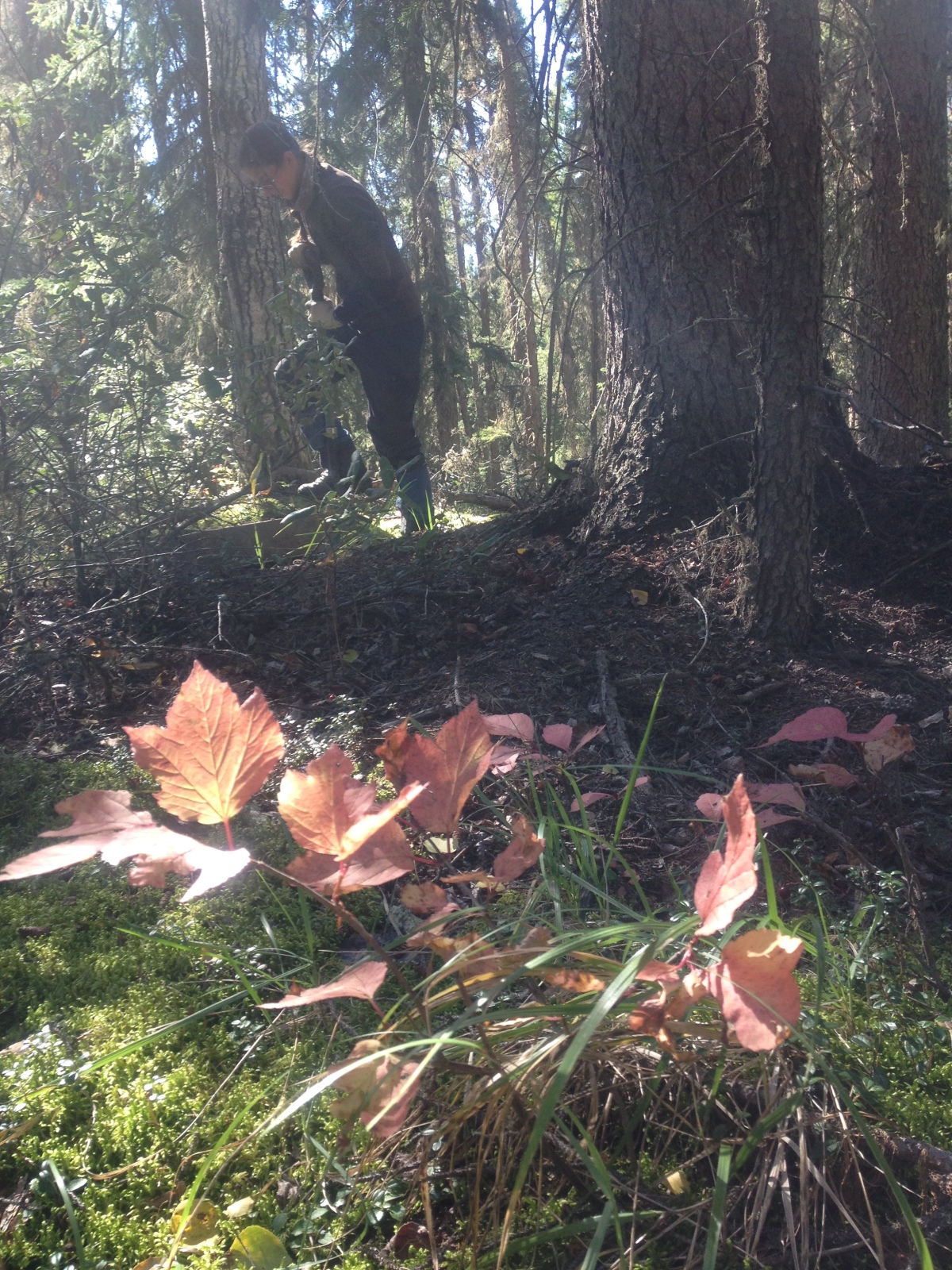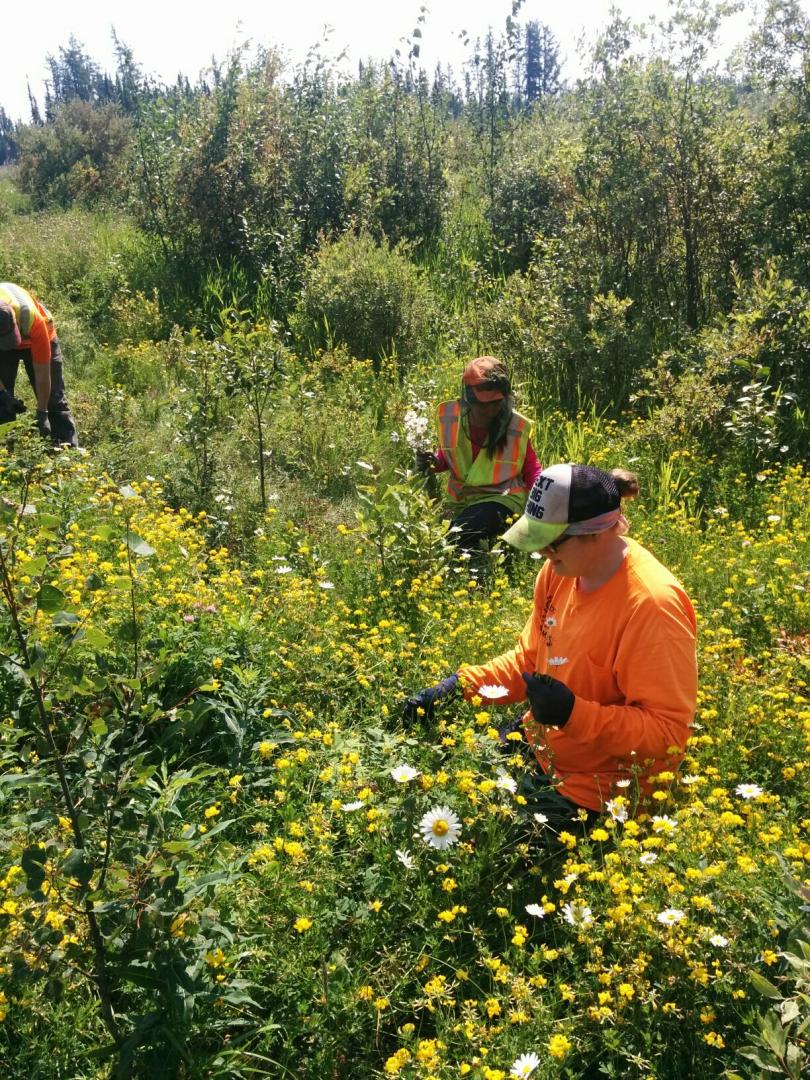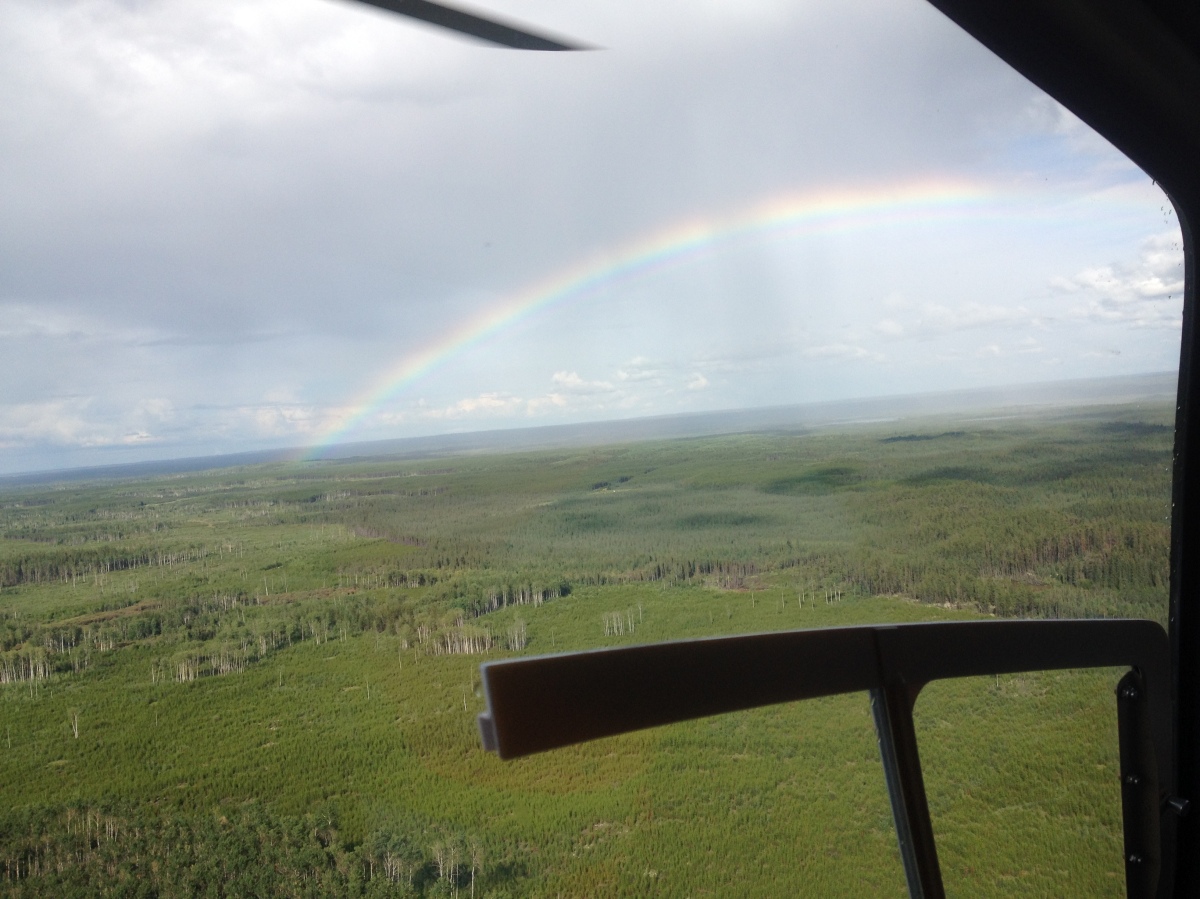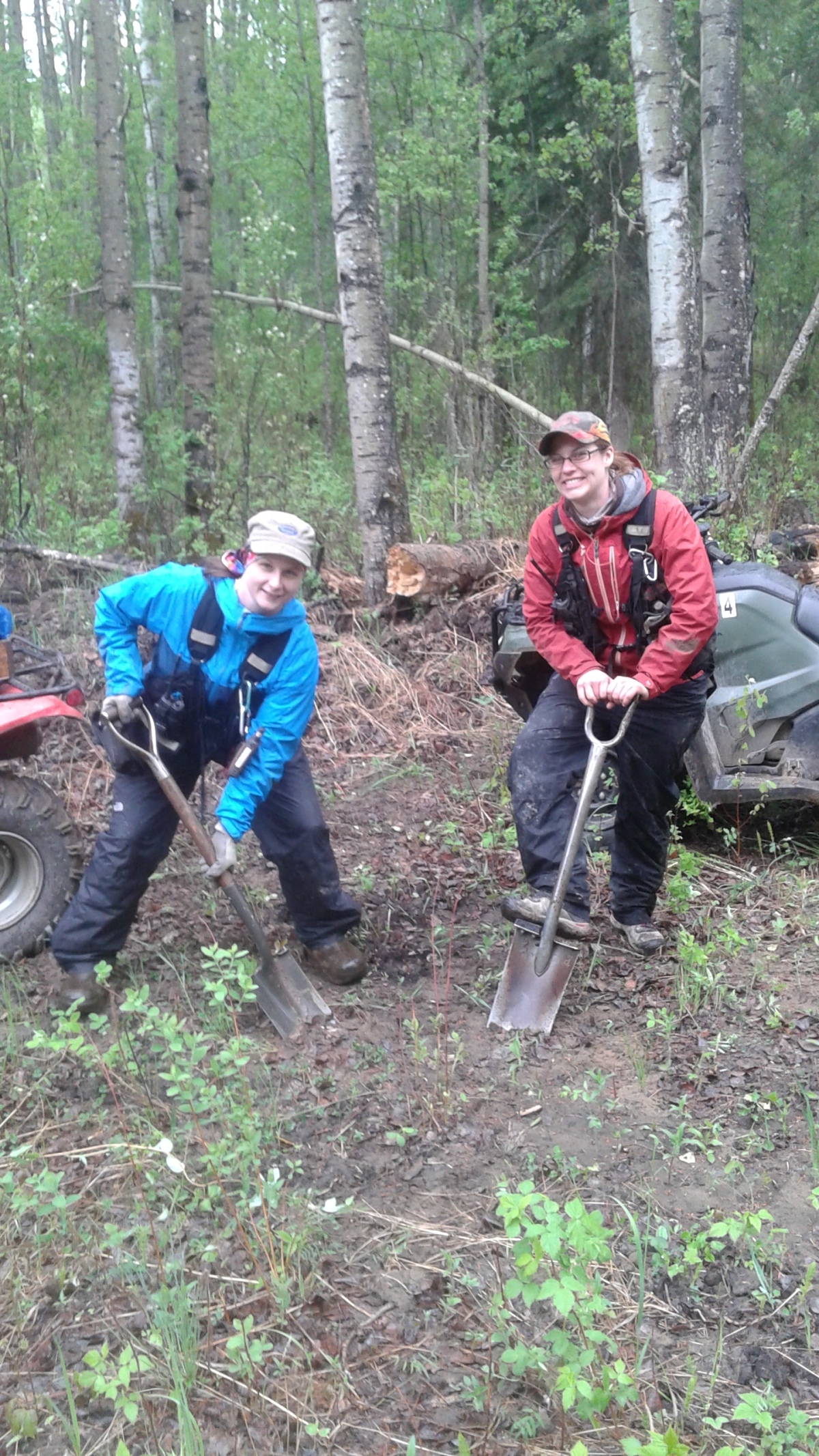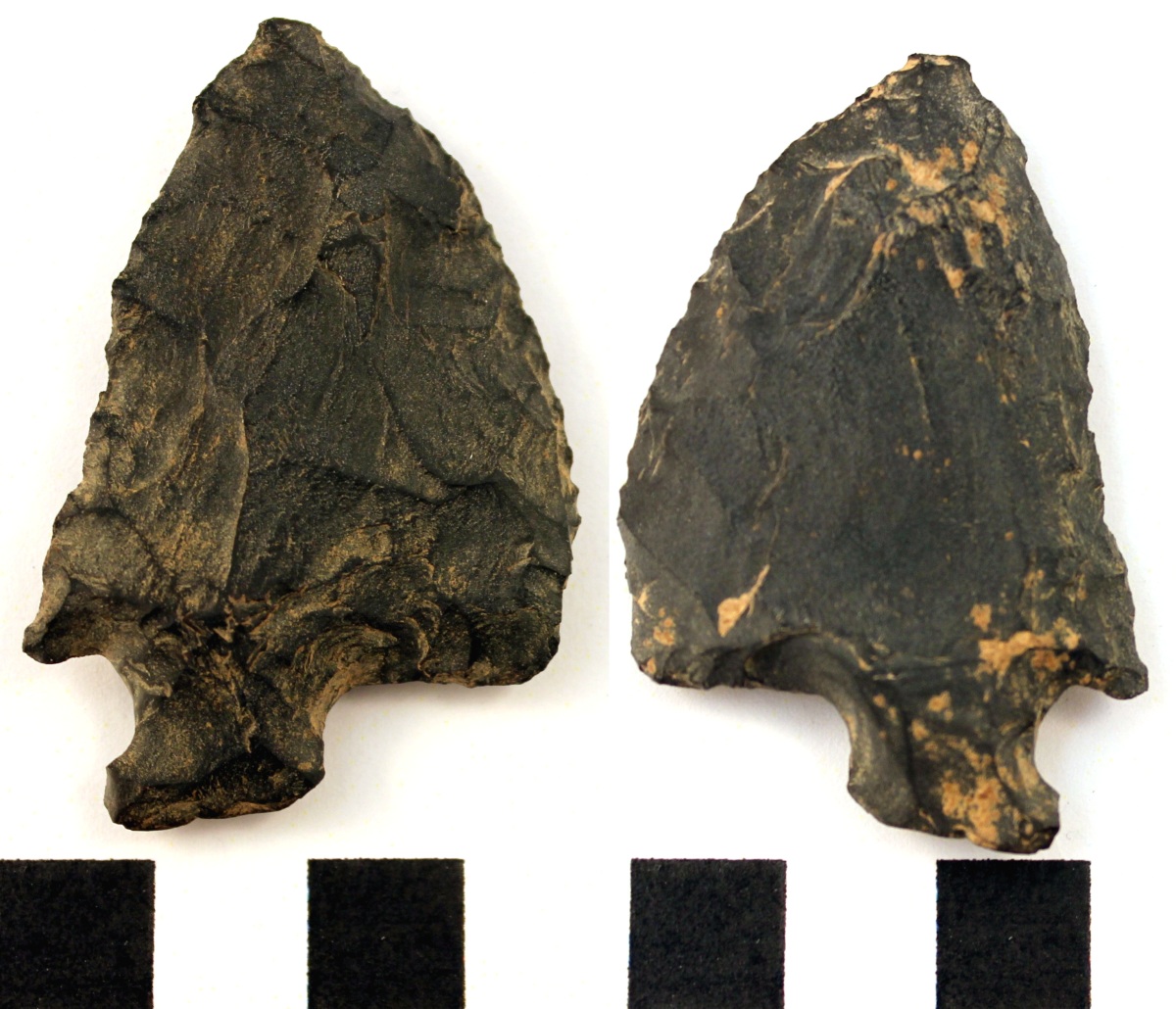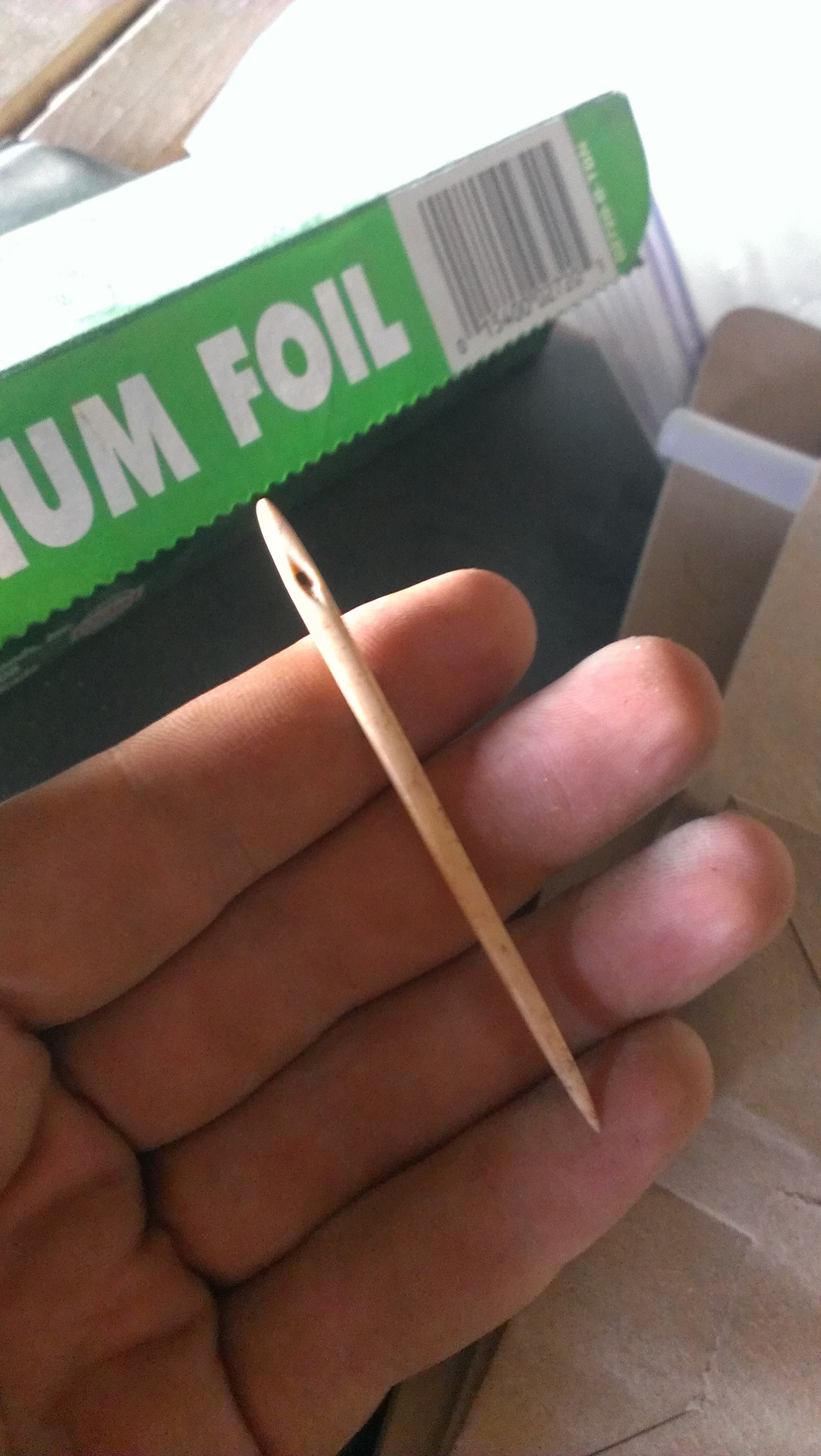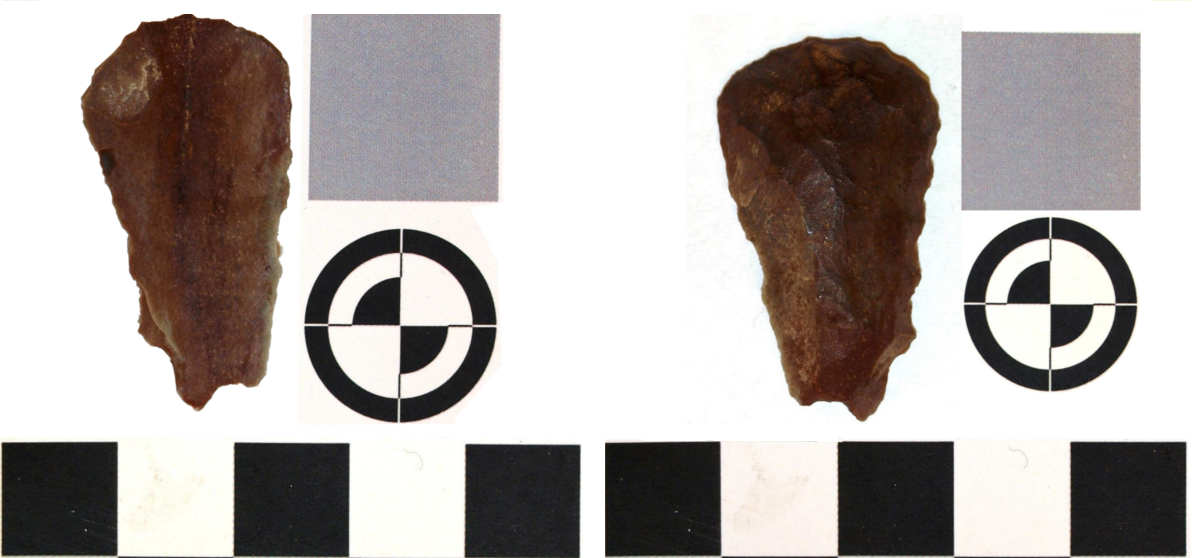A biface is a stone tool that has flakes removed from both sides. It can be used as a knife, scraper, or further worked into a more recognizable tool. The typical biface shape is an oval with slightly pointed ends. The biface on the left was found near Fort Vermilion in 2016.
Tag: archaeological
Digging a little deeper
Augering is another method used by archaeologists to test for deep sites and buried paleosols. In this picture Brian is using an auger to look for buried paleosols.
Deep testing
There are times when a shovel just won’t cut it. Some areas have high potential for deep sedimentation. When this occurs archaeologists will turn to other methods to look for sites and for buried paleosols. In this picture Kurt is about to monitor a backhoe while it digs a trench for us to examine. The end result is a long deep tench like the one pictured here.

Autumn colours
The leaves are quickly changing their colours into their beautiful fall reds, yellows, and even browns. This usually marks our annual crunch as we try to complete all our fieldwork before the snow falls! Here Alex is testing out a site we found for Alberta Plywood in the Marten Hills, near Slave Lake, AB.
Noxious Weeds
More than archaeology…
In addition to looking for historic resource sites when in the field we are always on the lookout for noxious weeds like these oxeye daisies. When we encounter them we report them to our clients so they can manage them appropriately. In this case the client requested that we pick them out by the roots so they could spray the area with herbicide before they went to seed.
Helicopter Access
On occasion accessing our target areas is simply not possible by truck, ATV, or foot. At least, not in a timely manner! So bring in the helicopters! They certainly bring a whole new perspective to the topography, and how our small target areas fit into the general landscape. This particular project was for AlPac, up in the Conklin area.
The King of Spades vs. the Grizzly
Over the years archaeologists have adopted technological advances from other disciplines. In the office, using programs such as QGIS along with LIDAR and other data sets we can create models to predict sites. In the field, we use a GPS for navigation and iPads to take our notes. Artifact processing has also seen many advances helping us to date and source artifacts.
For all of these advances that have been made in the field, certain tools remain the same. One of the most essential tools that we use in the field is a shovel. I know many people associate trowels and fedoras with archaeologists, however these are most commonly used in academic excavations. While in the world of CRM the trowel will be used for certain situations, the shovel reigns, specifically at Tree Time it is the King of Spades.
The reigning king
The advantages to the King of Spades are its durability and its ability to cut through roots. The all metal shovel has never been broken by a staff member at Tree Time. Maybe lost forever in a deep stream when accidentally dropped… but never broken. In addition, the sheer weight of the shovel can help pound through roots. Other shovels are not as durable, the blades may warp, and they are more prone to breaking at the shaft break. Not the king though.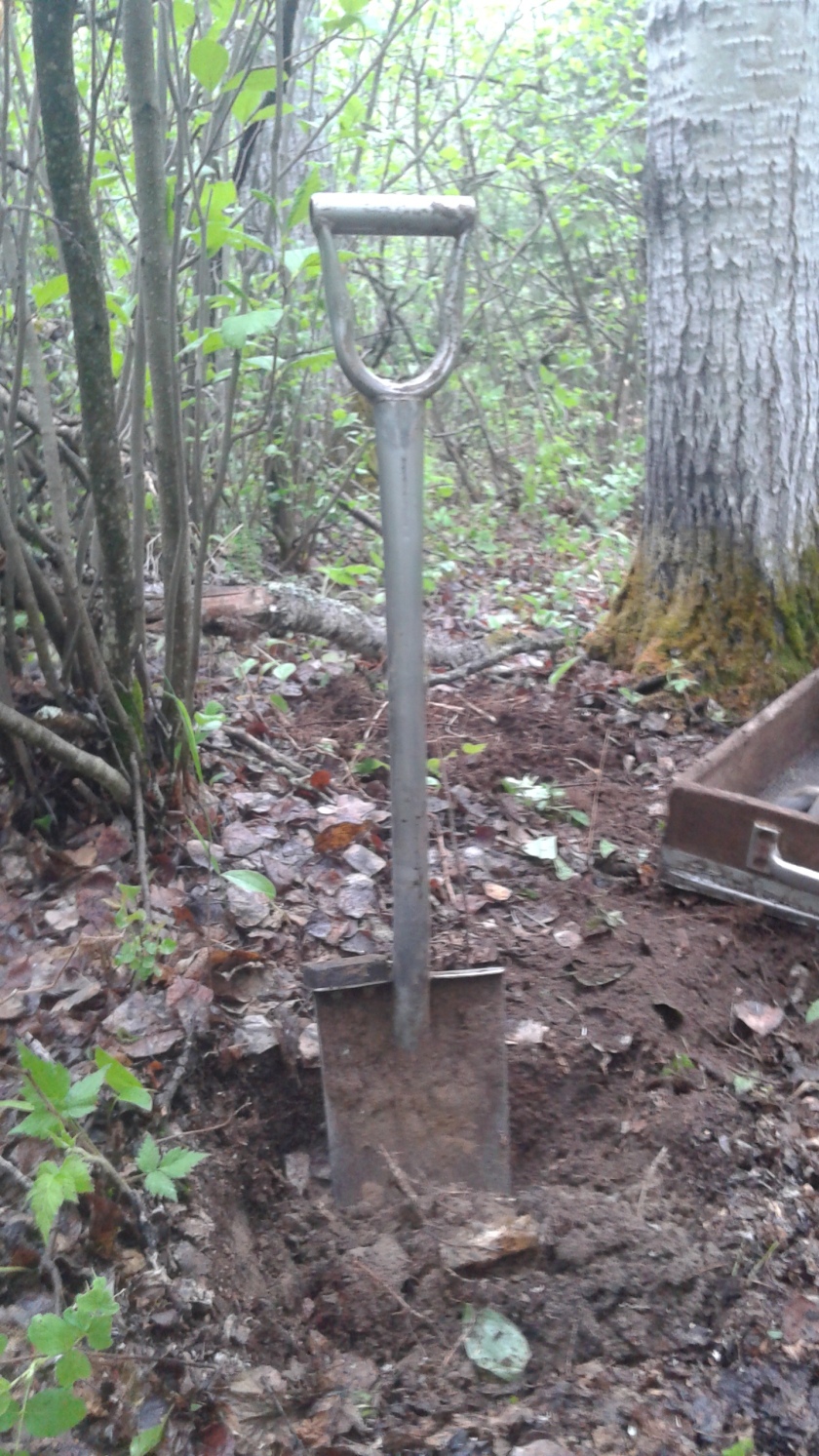
The Grizzly Challenger
Most shovels are not made of all metal but incorporate bits of wood. There can be a wide variety in quality so we highly recommend the Grizzly. These shovels are much lighter and easier to sharpen. The durability of the King of Spades comes at a cost, it is by far the heaviest and the most difficult to sharpen due to its thick blade. The ability to sharpen the Grizzly easily due to the thinner blade helps us maintain a sharp edge in the field to cut through roots. The light weight also makes them a lot easier to hike a long distance with, making for a much more pleasant hike.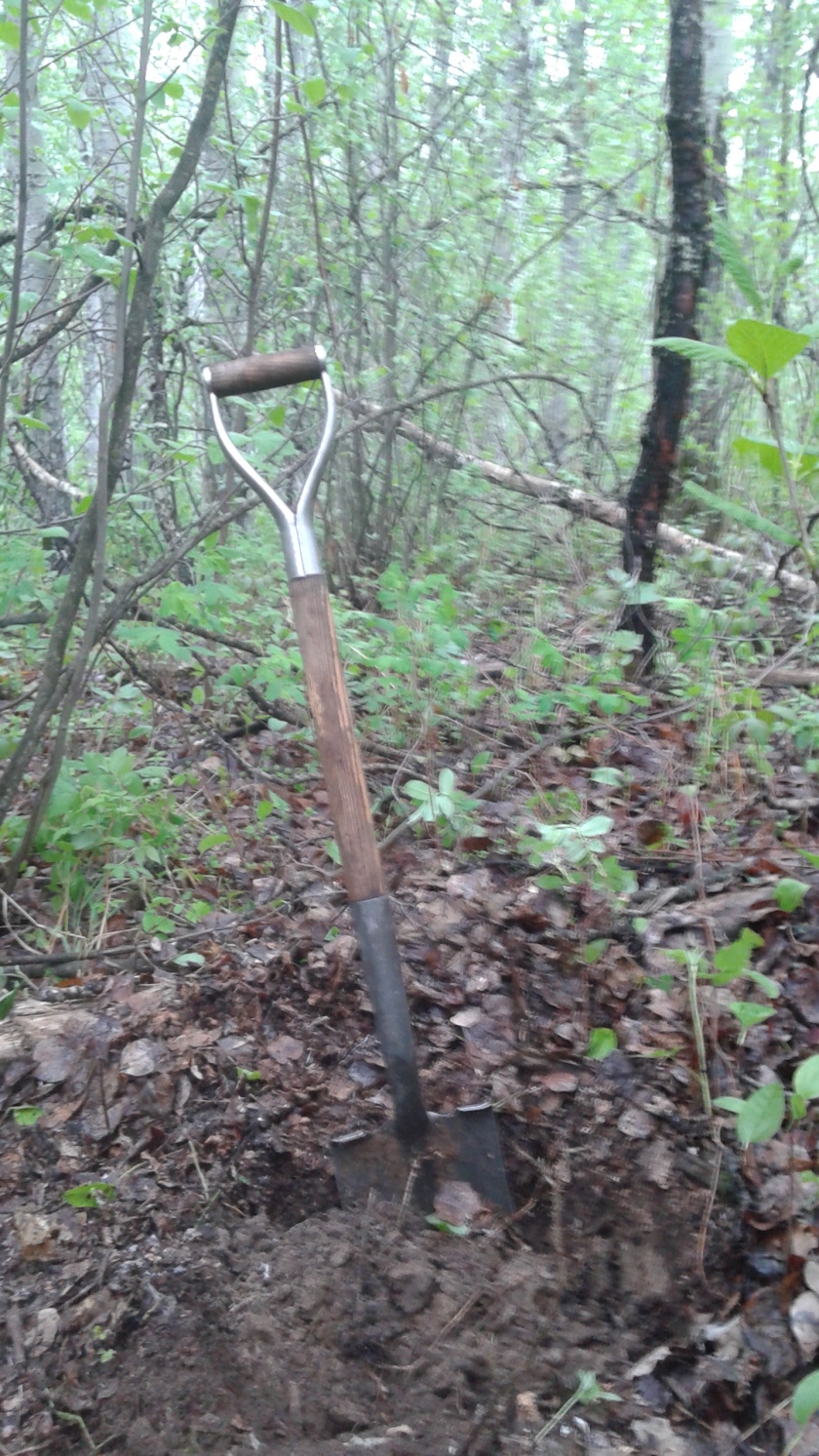
In the end the durability of the King of Spades wins the favor of most of us at Tree Time. In fact five out of seven archaeologists, well at least at Tree Time, agree that the King of Spades shovel is the preferred tool. Long live the king.
This would not have happened if Madeline had the King of Spades!
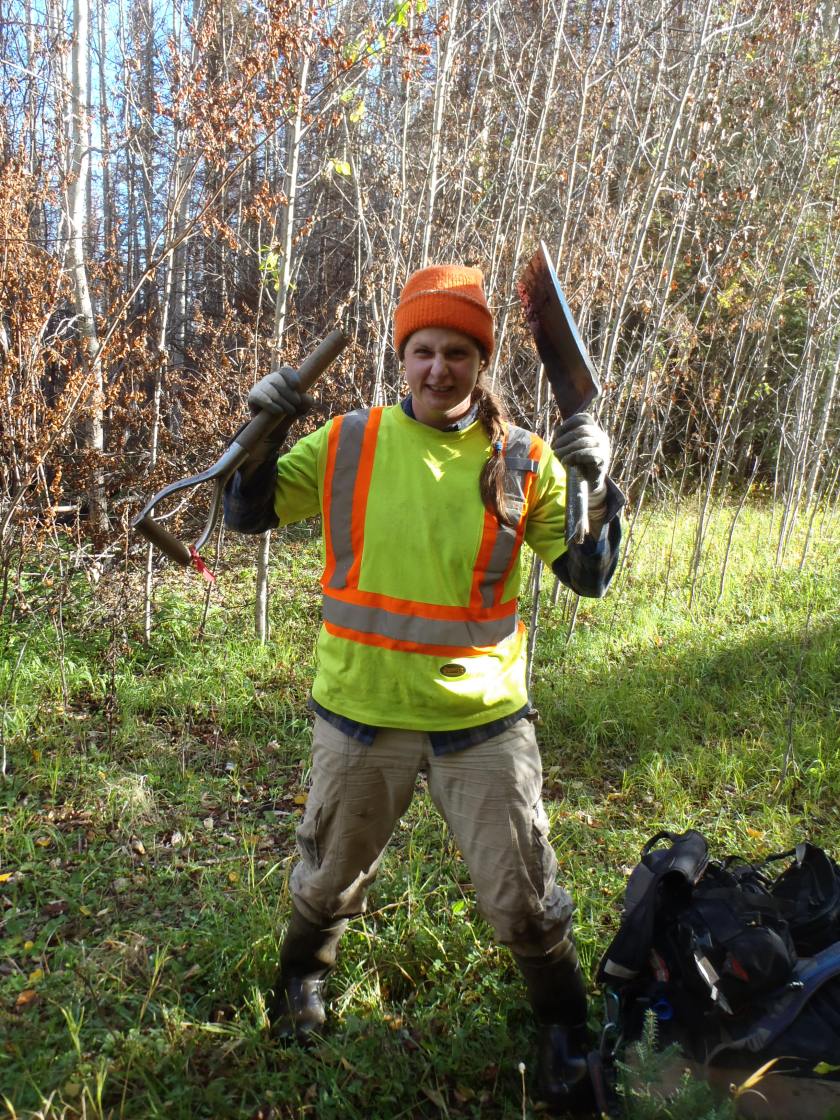
Asymmetrical Knife
This week we feature a picture of an asymmetrical knife found north of Lac La Biche at a site called Buffalo Beach. The knife has one rounded retouched cutting edge and the other edge is straight. The notched knob at the bottom of the artifact is where the knife would have been attached to a handle. The handle was likely made from an organic material that does not preserve as well as stone (for example bone, antler, wood, etc.). The style of this knife does not match any previously recorded artifacts found in Alberta.
Bone Needle
This week we showcase a very unique artifact, a bone needle. This tool is very long and thick compared to the modern steel needles that we are more familiar with, but it still very sharp at the tip. The eye of the needle is diamond-shaped and tapered, which shows us that the eye was made by gouging the bone with a stone flake, rather than using a bow drill. A bow drill would have left a round hole rather than a diamond-shaped one. This type of artifact is extremely rare in North America, especially one that is complete. Most of the time when they are found, bone needles like these are broken around the eye, or you just find the tip of the needle.
This artifact was found in a dry cave in Utah, which is filled with artifacts left behind from thousands of years of indigenous people living in the cave. These repeated occupations left behind countless layers of juniper bark, which was laid down as a floor matting. The bone needle was found three meters below the modern surface. Talk about finding a needle in a haystack!
End Scraper
This week we feature a stone tool found upstream on Fall Creek, about 55 km west of the community of Caroline, AB. We were undertaking an assessment for Sundre Forest Products and testing a flat area overlooking the creek (shown below) when Ryan found the end scraper shown above.
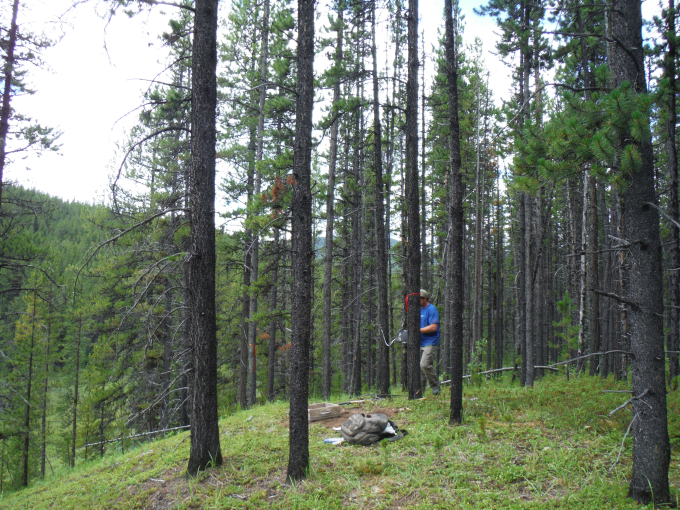
A “scraper” is a type of tool that is usually unifacial, meaning the stone was worked on one of its sides (or faces) only. Compare the two sides shown in the image above and you’ll see the one shown on the left is much smoother, except for a small piece that may have been broken off when digging the shovel test. The face of the scraper that is worked typically has pieces chipped off on the side or end in order to make a thick and strong edge. This is the scraping edge that could be used to prepare hides.
Unifacial working and a thick edge are the two main criteria used when identifying an artifact as a scraper, so as you can imagine there are a lot of different styles of scrapers found at archaeological sites. Just take a look at the beautiful example Reid describes in this blog post.
Regardless of what style of scraper you’ve found, a close look at the edge of these artifacts can reveal some “use wear,” when the edges become chipped, polished or worn down through the process of scraping hides, bone, wood or other softer materials. As a result of this wear, scrapers would occasionally need to be resharpened and the tools would become smaller and smaller through the resharpening process. It’s possible this scraper was considered too small to be of any more use and so was thrown away only to be found by us, perhaps thousands of years later.

